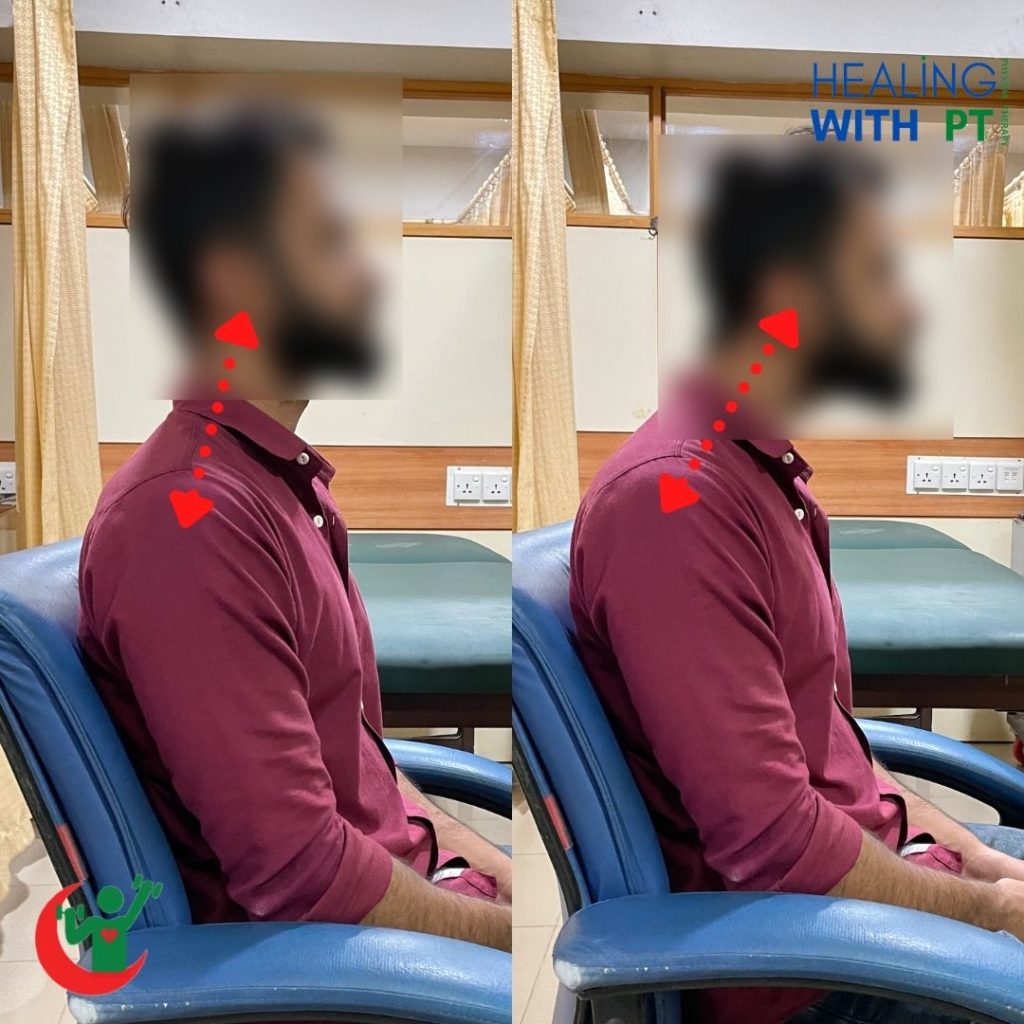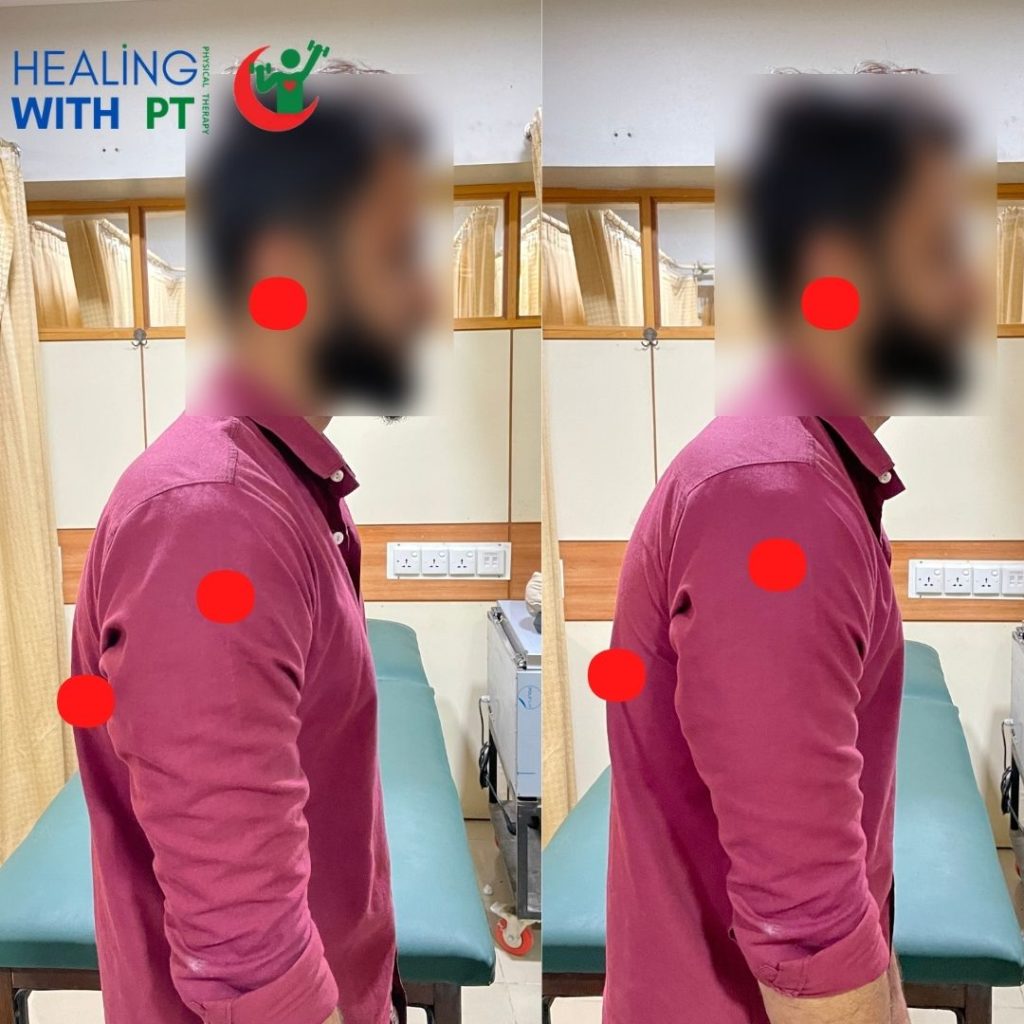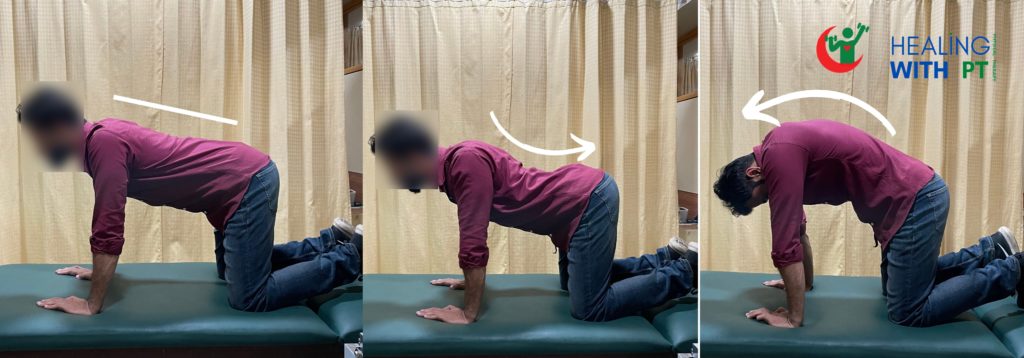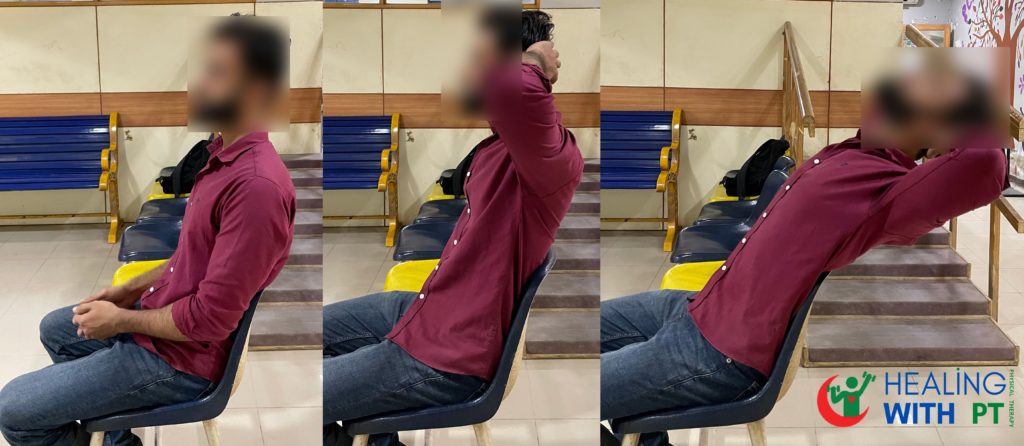Breathing is fundamental for living.
We generally hear a lot about the different forms of breathing such as mouth breathing, belly breathing, diaphragmatic breathing and so on.
All of these, no doubt, are important topics but one essential component often seems to be missing from these conversations – and that’s thoracic mobility.
Your lungs are surrounded by the rib cage which attaches to the breastbone in the front and the thoracic spine at the back. The mobility of all these structures plays a central role in your breathing and the quality of respiration.
In this article, we’ll discuss how thoracic mobility is linked with improved breathing. We’ll also cover the physical therapy exercises and techniques that can help you improve your thoracic spine and rib cage mobility.
But first, let’s understand what thoracic mobility is so that you can appreciate its relationship with breathing.
What Is Thoracic Mobility?
Our spine is divided into five sections and the thoracic spine is the upper back region. This segment is naturally bent outwards (medical terminology: kyphosis) while the low back region (lumbar spine) is bent inwards (medical terminology: lordosis) same as the neck region (cervical spine).

Thoracic spine movements include some level of flexion (bending forwards), extension (bending backwards or straightening the spine) and rotation.[i] If you can perform these movements within the average range, then it means that you have good thoracic mobility.
Sometimes these movements become restricted due to the stiffness of the vertebrae. That can lead to decreased mobility of the upper back. Since the rib cage attaches to the thoracic spine, limited mobility of this region directly impacts your breathing.
It’s important to note that the T spine’s movements are naturally smaller in magnitude as compared to the low back region or the neck. We call it a stiff thoracic spine only when the range of movement decreases beyond what is normal for this region.
This stiffness of the thoracic spine can also result in an increase of the normal curvature of the upper back – this condition is called kyphosis.
Other dangers of a stiff upper back include decreased upper limb movement especially overhead motions and a forward head posture.


How Do I Know if My Upper Back Is Stiff?
The best way to self-assess if your upper back is stiff is to check your chest expansion. You should see about 2 to 5 inches of difference in chest circumference when you go from full inhalation to full exhalation.
To measure this:
- wrap a tape measure around your chest at the level of nipples.
- Take a breath (inhale) and record the measurements in inches.
- Let the air out (exhale) and record the measurement again.
- Calculate the difference by subtracting the inhalation value from exhalation value.

In case your chest expansion is less than the average, it could be an indication of decreased thoracic mobility.
Chest expansion isn’t the only test. Physical therapists have a few different methods to check for a stiff thoracic spine. These include measuring thoracic movement with a goniometer and observing the movement of the chest during breathing to name a few.
You can get this checked by visiting a physiotherapist. Most clinics will do a thorough physical checkup even if you’re healthy.
How Is Thoracic Spine Mobility Related to Breathing?
The thoracic or chest cavity consists of different segments – the breastbone (medical term: sternum) at the front, ribs and the twelve thoracic vertebrae.
The entire chest acts as one unit when we breathe. It expands when we breathe in due to the lungs being filled with air. And the level of chest expansion is highly dependent on the mobility of ribs and the thoracic spine. If either of these structures is compromised, perhaps due to stiffness, then breathing is compromised.
Your breathing pattern is similar to the motion of a bucket’s handle. When you inhale, the lower ribs move forward to make room for the expanding lungs. That’s possible because of the natural flexibility of the thoracic spine.

When the spine is restricted, the bucket handle motion can’t be completed and so breathing is affected. You might not notice a major difference in your breathing at rest or at low-level activities even if your thoracic mobility is decreased. But the lack of movement becomes an issue when you need to take deeper breaths.
We know this because studies conducted on scoliotic patients suggest that the breathing movement and total lung capacity during maximal breathing are decreased in people with scoliosis as compared to healthy reference values.[ii]
Better thoracic mobility is also linked to better pulmonary function and increased total lung capacity.
Total lung capacity (TLC) is the maximum volume of air that your lungs can hold during full inspiration. The average is about 6L in healthy adults. But it can vary between people of different ages, heights, genders etc.
Thoracic spine stiffness is commonly seen in people who are less physically active. Since they don’t engage the back muscles enough nor move the chest through its full range of motion by taking deep breaths, their spine loses its mobility over time. Some people are naturally hypomobile as well.
Am I Breathing Wrong?
Probably not because there’s no one correct way to breathe. Men have a different breathing pattern than women and kids breathe much faster than adults and so have a different pattern. The point is – different breathing patterns exist and they are all correct for various population groups.
We’re not here to tell you that you’ve been breathing wrong because that won’t be entirely accurate. But there are some ways to optimize your breathing, improve your lungs’ capacity to hold air, and fill them up to their maximum capacity. And that’s what having good thoracic mobility can offer you.
How Can Physical Therapy Help With Thoracic Spine Stiffness and Breathing?
Thoracic mobility and breathing go hand in hand. Working on one can help you improve the other as well. Here are some physiotherapy exercises that can enhance your thoracic spine flexibility and help you breathe better.
1. Self-Stretching
Stretches and self-mobilizations work on the muscles, soft tissue, neural tissue and the joints in the upper back.
- Lie on your side with your knees bent. Straighten your arms and use them to rotate your upper back. Hold for 10-15 sec. Return to a side-lying position.

- Come to your all fours. Place your hands directly under your shoulders and knees below your hips. Move your shoulders away from the ears and drop your low back. Now reverse the back arch by creating a hunch and drop your head.

- Place your hands behind your head. Move your elbows towards the back as much as you can. You can apply overpressure as well sitting in a chair with a shorter back and dropping your upper body backwards while your hands are behind your head.

2. Postural Exercises
Maintain your posture in an upright position while you sit or stand. For that, you can use ergonomic chairs with good back support. You can also practice actively engaging the upper back muscles while sitting on a stool without back support to train your muscles to maintain the correct posture.
3. Deep Breathing
Proper deep breathing provides enough mobilization to the T spine and the rib cage. Take a slow deep breath through your nose and try to fill your lungs up with air as much as you can. Slowly release the breath through your nose and let your chest come back down.
Remember that the chest movement during breathing is not a big movement. Or simply put, you shouldn’t see too much movement of your body.
Who Needs to Improve Their Thoracic Spine Mobility?
From healthy teens and adults sitting at their desks all day to elders with limited activity, everyone should work on opening up their thoracic spine.
We recommend that even kids should practice thoracic mobility exercises. That’s because studies have found that decreased thoracic mobility at a young age (between 11-19 years) can cause structural changes in the lungs. Lungs are still growing at that age by neoalveolarization. Hence thoracic stiffness can lead to a reduced number of alveoli and compromise breathing. [iii]
Having poor posture or hunchback (kyphosis) is another reason why younger people should regularly practice thoracic mobility exercises.
For most adults, their modern lifestyles are physically limiting. We often fail to routinely move our bodies in the full range of motion and that leads to stiffness in our backs amongst other areas of the body.
When Should You Start Thoracic Mobility Exercises to Improve Breathing?
Having good thoracic mobility can help you breathe in your day to day life. But it’s all the more important when you need to breathe better and move a lot of air through your lungs as is the case when you’re exercising.
It can also significantly help pregnant women and older people who might suffer from lung diseases such as asthma or COPD.
Physical therapists tend to include thoracic mobility drills in the exercise regimen of patients who are scheduled for surgery. That’s because the quality of breathing is often affected after surgery due to anesthesia.
Also read: Reasons to explore PT before surgery.
You should begin thoracic mobility exercises when:
- You’re starting to exercise more.
- Recovering from surgery or scheduled for surgery.
- Preparing to give birth.
- Developing hunchback posture.
- Anytime in your life when you realize that you can’t breathe too well.
Key Takeaways
Improved thoracic mobility improves breathing and vice versa. If you suffer from lung diseases, have just undergone surgery, recovered from the ICU, or are about to give birth, then you should religiously practice the thoracic mobility exercises that we’ve covered above.
But even if you’re otherwise healthy and don’t have any breathing complaints, you might still benefit from checking your thoracic spine mobility and improving it if it feels restrictive or stuck.
Stress affects our bodies in ways we are unaware of. Our sternum, back, neck and muscles of the spine hold stress and, as a result, contract unnecessarily.
Consciously relaxing these areas and practicing mobility can improve your breathing and reward you with mental benefits as well.
Contact us to schedule a one-on-one physical therapy session to evaluate your breathing and mobility. Also, feel free to reach out if you have any questions regarding the exercises discussed in this post.
Disclaimer: This article is for informative purposes only. We provide well research and authentic information. Do not consider this as personalized health advice. Please contact a licensed doctor for medical issues and health concerns.
[i] https://www.ncbi.nlm.nih.gov/pmc/articles/PMC3940794/#:~:text=Thoracic%20spine%20is%20considered%20to%20have%20a%20restricted%20range%20of,angular%20movements%20of%20thoracic%20spine.
[ii] https://link.springer.com/article/10.1007/s43390-019-00018-y
[iii] https://www.atsjournals.org/doi/full/10.1164/rccm.201107-1348OC